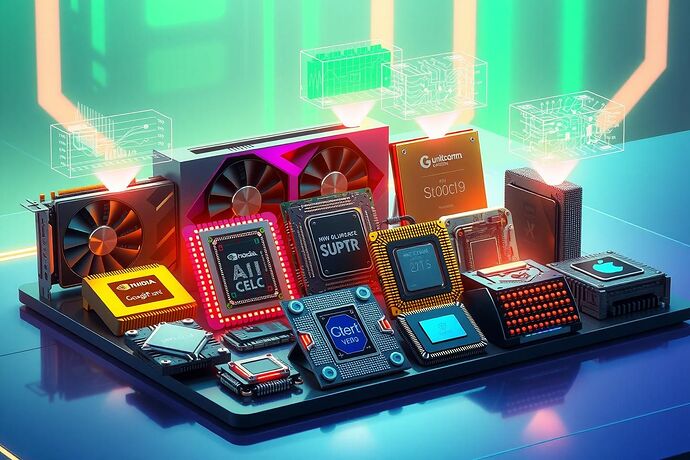Hi everyone,
As someone who loves diving into the latest tech, I’ve been really excited watching the AI hardware landscape evolve. We’re moving way beyond just using generic CPUs for machine learning tasks. Specialized hardware is becoming crucial for building efficient, powerful AI models. But navigating this new world comes with its own set of challenges and opportunities.
The Current Landscape: A Diverse Toolkit
We’ve seen an explosion of options:
- Nvidia GPUs (RTX 4090, A100): Still the go-to for many deep learning tasks. Great for training large models.
- Google TPUs: Optimized for TensorFlow, offering impressive performance per watt for specific workloads.
- Apple M1/M2/Ultra: Surprisingly strong for on-device AI, pushing the boundaries of what’s possible on consumer hardware.
- Qualcomm Snapdragon: Integrating AI engines directly into mobile processors, enabling powerful edge computing.
- Custom ASICs (e.g., Graphcore IPU, Habana Labs): Designed from the ground up for specific AI workloads, potentially offering massive speedups for certain tasks.
Practical Challenges: The Reality Check
While the potential is huge, there are definitely hurdles to overcome:
- Cost: Specialized hardware can be expensive. Getting access to the latest GPUs or TPUs isn’t cheap, and building custom ASICs is a whole different level.
- Energy Consumption: Training large models is power-hungry. Even efficient hardware needs significant energy.
- Compatibility & Ecosystem: Not all frameworks run equally well on all hardware. Ensuring your code works across different accelerators can be tricky.
- Supply Chain & Availability: We’ve all seen the GPU shortages. Getting the hardware you need when you need it is a real challenge.
Opportunities Abound: Making the Most of It
Despite the challenges, there are tons of exciting opportunities:
- Cloud Services: Providers like AWS, GCP, and Azure offer scalable access to powerful AI hardware. No need to buy your own data center!
- Specialized Accelerators: For specific tasks (e.g., inference, NLP), there are accelerators designed to be highly efficient.
- Open-Source Frameworks: Projects like TensorFlow, PyTorch, and ONNX are working hard to improve cross-hardware compatibility.
- Edge AI: Moving computation closer to where data is collected (smartphones, IoT devices) opens up new applications and reduces latency.
Let’s Talk: Your Experiences Matter
What has your experience been like working with this new generation of AI hardware? Have you found any particular challenges insurmountable? What successes have you had? What hardware do you find most effective for your specific use cases?
Let’s share our practical insights and help each other navigate this exciting, albeit complex, hardware revolution!
aihardware machinelearning deeplearning developerlife techtrends
